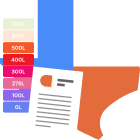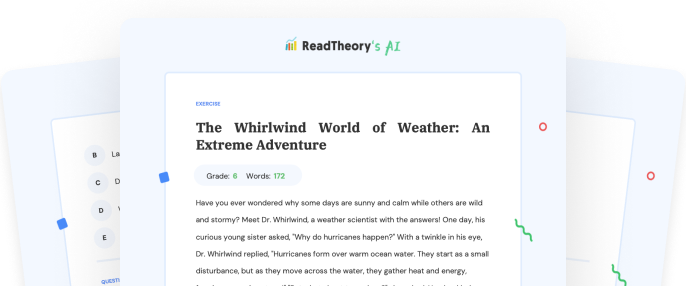Transform Your Teaching
with AI-Powered Worksheets
With ReadTheory’s Instant Worksheet Builder, you can create engaging, grade-appropriate worksheets tailored to your students in minutes. Spark curiosity, save time, and empower critical thinking with AI-powered tools designed for teachers like you.


A Winter Wonderland: Fun Activities in Wisconsin
As the first snowfall hits Wisconsin, each flake brings a wave of excitement. Winter here is not just about cold weather—it's a season of fun-filled activities and gleaming smiles. One of the most popular pastimes is ice fishing on Wisconsin's frozen lakes, offering both tranquility and thrill. For those seeking a rush of adrenaline, sledding and skiing down the state's snowy slopes provide unrivaled joy. Snowshoeing is another unique experience, allowing you to traverse the snow-blanketed landscape at your own pace.
But winter in Wisconsin isn't just about individual experiences—it's about community. Every winter, Madison hosts a spectacular festival, a celebration filled with ice sculptures, kite-flying, and frosty fun. Meanwhile, Lake Geneva's Ice Castles—frozen fortresses that seem straight out of a fairy tale—promise enchanting experiences for all.
Not to forget, the sheer delight of simpler things—a game of hockey on an icy field, building a snowman, or engaging in a friendly snowball fight. Each activity makes Wisconsin's winters truly unforgettable. So next time snowflakes start swirling around, remember, it's not just snow—it's the beginning of an exhilarating Wisconsin winter.
Question 1
What is one of the most popular pastimes in Wisconsin during winter?
Swimming
Mountain Climbing
Ice Fishing
Cycling
Hiking
Question 2
What does the term 'tranquility' in the context of the passage refer to?
Noise
Confusion
Fear
Peace
Haste
Question 3
What is the tone of the passage?
Sad
Fearful
Exciting
Angry
Boring
Question 4
What is the purpose of the Ice Castles in Lake Geneva as described in the passage?
To serve as a fort during winter
To provide a place for ice fishing
To offer enchanting experiences for all
To serve as a skating rink
To store ice for the summer
Question 5
Based on the passage, which activity is not mentioned as a part of Wisconsin's winter?
Snowball Fight
Ice Fishing
Building a Snowman
Kite-Flying
Surfing
 or share via
or share via

Assign the ReadTheory pretest to determine students' reading levels.

Why Teachers Love
Instant Worksheet Builder?

Tailored Content for Every Student
Craft worksheets with passages and multiple-choice questions customized to your chosen topic and grade level, ensuring relevance and engagement.

Save Hours
of Prep Time
Our AI, Lexi, generates complete worksheets—passages, questions, and answers—in minutes, freeing you to focus on teaching, not planning.

Standards-Aligned Learning
Every worksheet is designed to boost reading comprehension and critical thinking, aligning seamlessly with State Standards to help your students shine.
Personalized teaching
for personalized learning
Browse worksheets created and refined by educators using Lexi—your source for inspiration and ready-to-use resources.


ReadTheory is free for Teachers to use.
Join thousands of educators using ReadTheory for free. Sign up today and start creating in just minutes!





